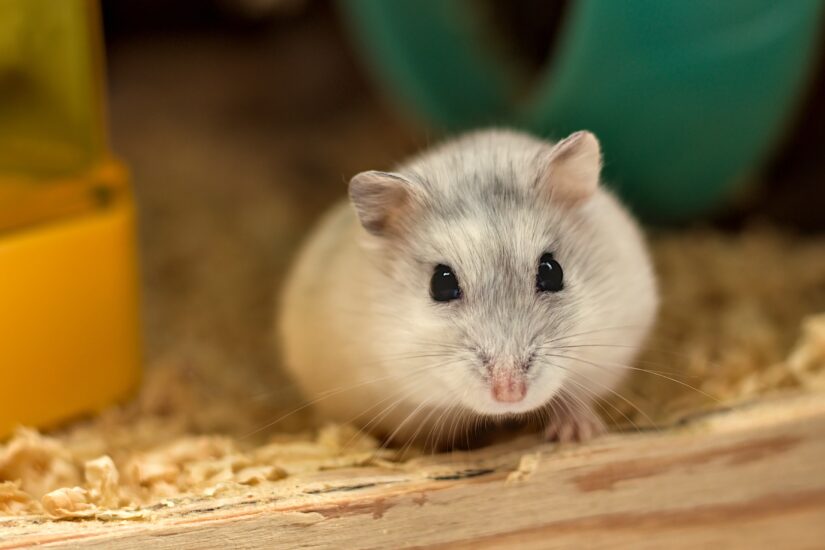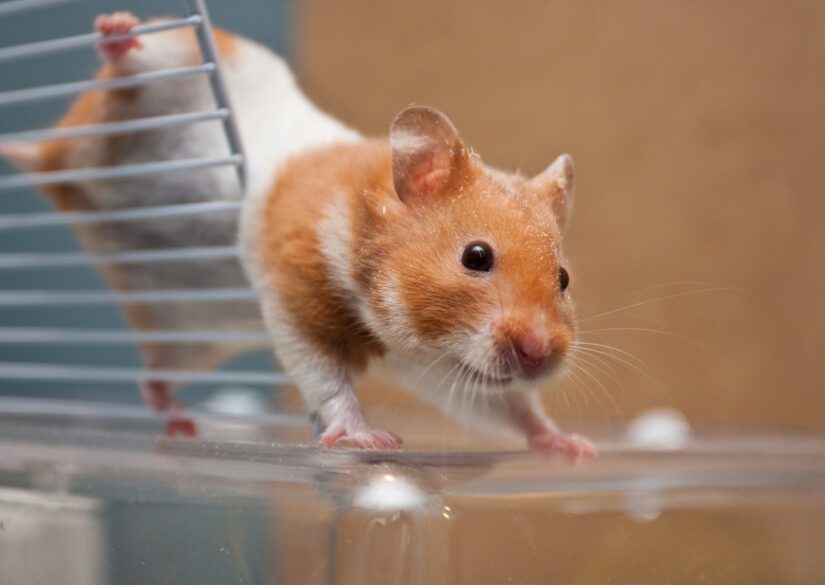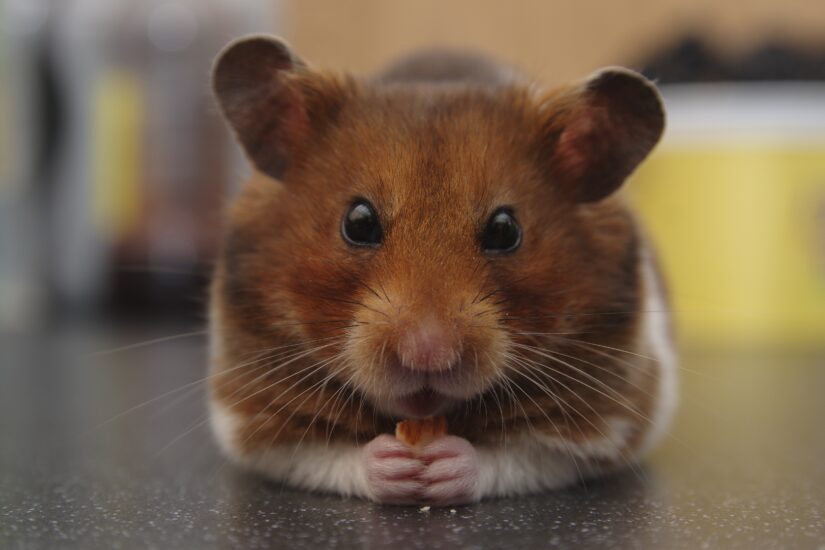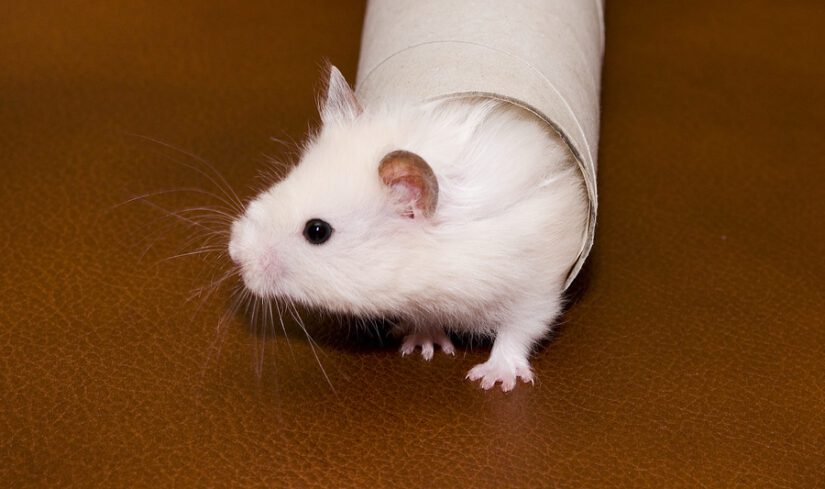In the wild, hamsters live in underground burrows where they sleep, stash food, raise families and hide from predators. They’re most active at night, travelling long distances to gather foods such as seeds and insects in their stretchy cheek pouches.
Before adopting a hamster, it’s important to understand these natural behaviours to ensure you’re ready to provide the kind of environment and care these engaging rodents need.

Types of hamsters
Though there are many types of hamsters in the wild, only five species are commonly kept as pets. There’s the popular Syrian and the less common dwarf hamsters: the Campbell’s Russian, winter white Russian, Roborovski and Chinese. These small Asian rodents have only been around as companion animals for less than a century.
Syrian hamsters
Syrian hamsters are the largest and easiest to handle of all the pet hamsters. Though they can be jumpy as youngsters, most mature into calm pets. They usually live for about two years.
Syrians come in a variety of colours and patterns such as dark chocolate brown and tortoiseshell. They can also have different coat types like short, long or curly. Because of this, they’ve earned a number of nicknames over the years, including teddy bears (longhaired Syrians), black bears (black-coated Syrians), panda bears (black-and-white Syrians) and Hershey bears (chocolate-coloured Syrians), just to name a few.
Syrian hamsters are solitary and should be housed alone. Otherwise, they will fight.

Dwarf hamsters
Dwarf hamsters are small and fast-moving and can be difficult to handle. They haven’t been kept as pets for as long as Syrians and aren’t found in as many colours, patterns and coat types. Dwarf hamsters also have a lifespan of about two years.
Except for Chinese hamsters who are solitary, dwarf hamsters are social and can be housed in same-sex pairs or small groups. To help prevent squabbles, they should have a large enough habitat and come from the same litter or be introduced to each other when they’re very young.
Never keep male and female hamsters together, even for a short period. Hamsters multiply at an amazing rate. Females can have up to 10 litters in just one year, with anywhere from four to 12 young per litter.

What do hamsters need?
Nighttime care
Hamsters are nocturnal. They like to be active at night and sleep during the day. So your hamster may be just getting up when you’re heading for bed. It’s important to be up late enough to care for them. Disturbing your hamster during the day can cause them to get upset and bite.
Food and water
Being omnivores, hamsters eat both plant and animal foods. Feed your hamster a staple diet of hamster pellets or blocks. Hamster pellets are a complete, balanced diet and should be available to them all the time. Provide a small amount of vegetables, fruits, nuts and seeds every day, too. Hamsters crave variety.

They also love treats. Foods such as plain popcorn, scrambled eggs and cooked pasta make great snacks. Just don’t feed them too many treats, or you’ll end up with an unhealthy hamster.
Because hamsters hoard their food, be sure to look for hidden stashes. Take away any uneaten fresh food the next day so it doesn’t spoil and make them sick.
Hamsters need water available to them all the time. Fill your hamster’s sipper bottle with clean, fresh water every day. Once a week, clean the bottle using soap and water. It can be best to avoid water dishes. Hamsters tend to bury them as they dig, creating a soggy mess.
Dental health
To help wear down their ever-growing front teeth, provide your hamster with chewing items such as cardboard, wooden toys and apple or aspen branches. Make sure the branches come from trees that haven’t been treated with any chemicals.
Habitats
Hamsters are active animals requiring a large habitat. The more space, the better. Hamsters like to burrow, so a deep enclosure with a solid bottom is best. A 40-gallon aquarium with a wire mesh lid works well for a single Syrian or a pair of dwarf hamsters. Aquariums are secure and can easily be filled with burrowing material. Other options include do-it-yourself cages made from large, clear plastic storage bins or glass IKEA® cabinets.
Bedding
For bedding, use wood shavings such as aspen, shredded paper or bedding made from recycled paper. Avoid cedar or pine shavings because they can cause health problems. Provide a deep layer of bedding to allow your hamster to burrow. Clean toilet areas every other day and the entire cage once a week. Keep the cage in an area protected from cold drafts and direct sunlight, as well as loud noises and bright lights.

Enrichment
Adding small houses, hanging toys, ramps, tunnels, tubes and a solid (not slatted) exercise wheel provides stimulation and places to hide and sleep. Swap items in and out to keep your hamster’s cage interesting. Scatter or hang nesting material – like toilet paper – for your hamster to gather.
Toilet
Most hamsters will use one corner or area as a toilet area. You can buy a hamster-sized litter box at a pet supply store or use an appropriately sized glass jar turned on its side. Place some soiled bedding in the litter box to encourage your hamster to use it.
Safety
Hamsters are famous escape artists. To help prevent escapes, remember to regularly check your hamster’s cage for any weak spots or holes. Hamsters have strong teeth and can gnaw through wood, plastic and even soft metals. Make sure any lids are secure and doors are latched.
Exercise
Hamsters require daily exercise and will happily explore a playpen made just for them. A wading pool or a bathtub (drain closed!) lined with a towel works well. Fill with safe objects to climb on, over and through, to keep your hamster busy and interested. Paper bags, cereal boxes, paper cups, toilet paper rolls and untreated wood are good choices. Always supervise playtime.

How to handle a hamster
You can pick up your hamster by putting cupped hands near them and letting them crawl into your hands. It’s important not to squeeze them and to hold them close to the ground. Not all hamsters enjoy being held and some may try to leap from your hands, which is very dangerous.
If you’re feeling uncertain, check out more small animal handling tips.
A happy hamster is a healthy hamster
As prey species, hamsters tend to hide their symptoms when they’re sick or in pain. Spending time with your hamster will show you how they normally look and behave. When you notice something unusual – like diarrhea or reluctance to move – it’s important to take them to the veterinarian immediately.
Adopt a hamster today!
Visit spca.bc.ca/adopt to view adoptable hamsters and other small animals.
…Or help support a critter in our care
Hamsters, rats, mice and other rodents often wait the longest out of all the animals to find the right person to adopt them.
